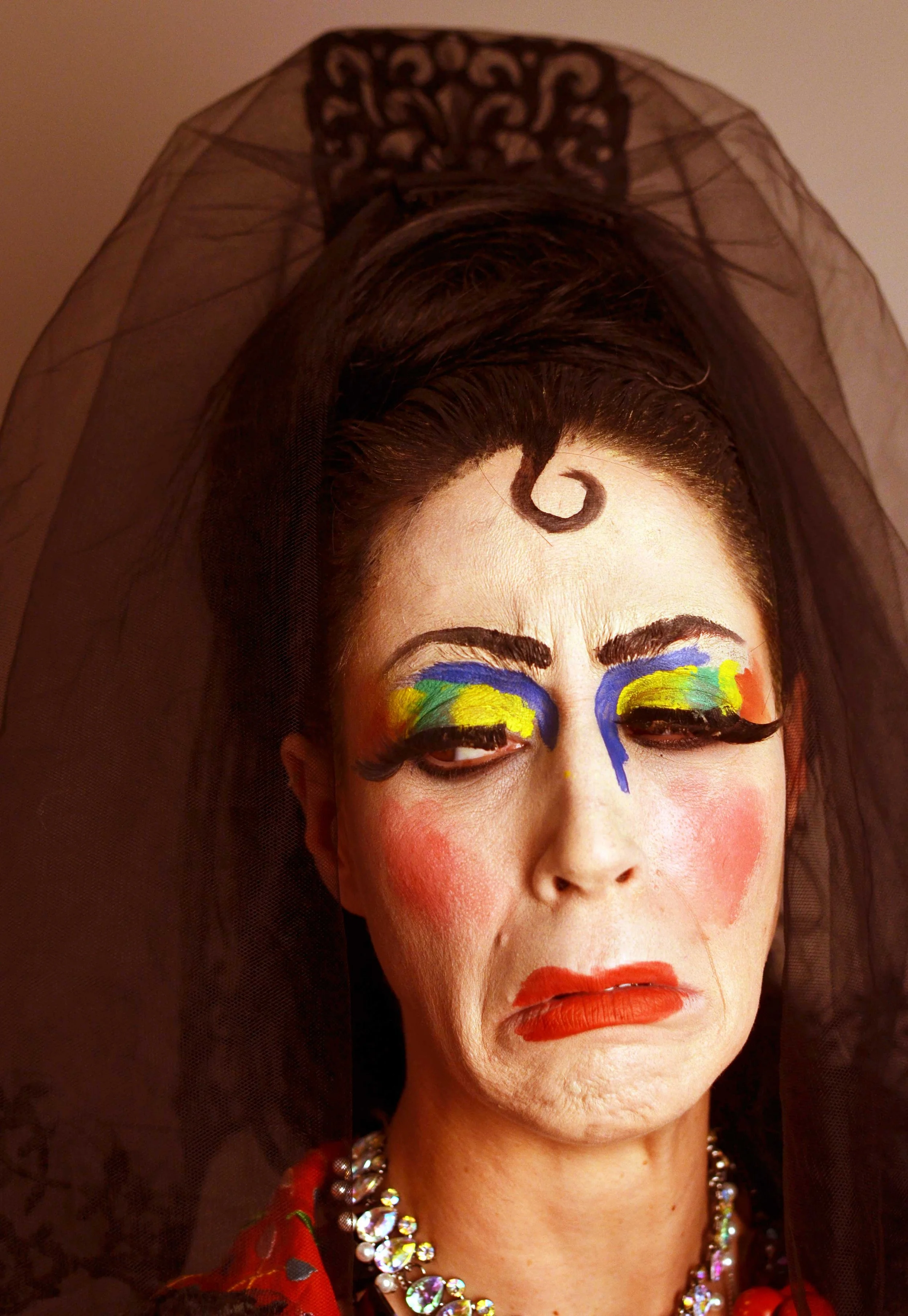Photo by Darren Evans
QUEEROLÉ! is a short dance-film about Flamenco’s queer history and its relationship with masculinity. The film was directed and performed by Patricia Langa and co-produced with Courtney Nettleford after being awarded with a DYCP Grant by the Arts Council of England in 2021.
In the film we travel back in time, through the gender politics of Flamenco’s queer history, to meet some of the individuals who imprinted their own stamp on the form. We encounter both real and fictional characters who either challenged or upheld gender stereotypes: people who notably broke through the binary or built it up further. Patricia guides the audience via the use of dance, theatre, drag, and music to reveal the lives of those who shaped what we understand the art form to be today - one of the most honest and free expressions of the self.
Patricia worked alongside fantastic artists to make this film possible: Fernando López Rodríguez, Lambdog, Sean Alexander Murray, Carl Harrison, Thick and Tight, Loren McKillop, Magdalena Mannion, Henri T, Prinx Silver, Emily Thompson-Smith, Daisy Doris May, Sarah Archdeacon, Gary Clarke, Owen Ridley-Demonick, Vidya Patel, Twinks Burnett, Orrow Bell, Lysander Dove, Rob Crouch and Jan Winter.
QUEEROLÉ! will come out in 2024
Keep an eye out for updates!
Characters in the film
Antonio Ruíz Soler (1921-1996)
Antonio, a Spanish Flamenco dancer, choreographer and director. Known as Antonio el Bailarín (the dancer), he mixed his passion for ballet, folklore, and Flamenco to create a unique style. He embodied Flamenco with every part of his body! Some people criticised him for this, but we all know they only envied his freedom!
Vicente Escudero (1892 - 1980)
Vicente, a Spanish Flamenco dancer. He was associated with the avant-garde movement during the early 20th Century (especially in Paris). However, on his return to a Francoist Spain he modified his argument slowly until becoming the inventor/defender of an ‘orthodox’ Flamenco. He was one of the first to critique the choreography and presentation of how a ‘man’ should dance Flamenco.
Photo by Darren Evans
Photo by Darren Evans
Fede 'El Majo'
Fede born in 1823 - death unknown (but rumours say he was hit with a jamón by one of his angry misters/mistresses). A thief and a Casanova. He truly was the life of the party!
A fictional character that represents the early stages of Flamenco which were freer, lighter, less structured and when Flamenco was danced at social occasions. He also represents the Majismo movement; a cultural phenomenon that embodied the popular aesthetic in Spain during the late 19th Century. The Majismo movement served as a vehicle to ‘regain’ Spanish heritage. In contrast to the classical movements in Europe, majos were the punks.
Records say that Flamenco appeared around the 1800s but its origins aren't completely clear. I feel Majos had something to do with it... don’t you?
Photo by Darren Evans
Flor de Otoño
Flor (birth and death unknown) was a mysterious real character who resided in the Barcelona of the late 1920s and 1930s. Flor was an anarchist and drag queen from the venue La Criolla (Barrio Chino/ Raval - Barcelona). Lots of conspiracy theories have been created around this beautiful character.
Flor represents Flamenco’s hybrid period where Flamenco started to be a performative commercial art, being performed alongside variety shows in cabaret spaces called “Cafes cantantes”. These spaces transformed Flamenco into a voyeuristic and sensual art enjoyed by the afterhours society. In these spaces, we find the first traces of cross-dressing and gender-bending.
Photo by Darren Evans
Miguel de Molina (1908 - 1993):
Miguel, a Spanish singer of “copla” (a type of Spanish singing).
Admired and loved by most but envied by others. This envy, as well as the violent prejudice against his queer sexuality, created lots of powerful enemies, who exiled Miguel to South America, never to return home.
He broke through the binary with his baroque productions and flamboyant costumes which he made himself. A kind, gentle, and generous queer icon that I admire for his courage, his big heart and his talent. This is a tribute to him.
Photo by Darren Evans
Francisco Franco (1892 - 1975):
General Francisco Franco, the villain of QUEEROLÉ!, took over Spain from 1939 until 1975. Under his dictatorship Flamenco was claimed by the far-right, made into a National symbol to attract tourism, and turned into something much more constrained, something divided into the binary of strict gender roles. So as we Spaniards say… que le den a Franco!
Photo by Darren Evans
José Pérez Ocaña (1947-1983):
Ocaña was from Cantillana, Andalucia, but lived from 1971 in Barcelona until his accidental death during a visit to his hometown. He was one of the best-known figures of Las Ramblas de Barcelona.
He was a revolutionary artist, a true countercultural punk, an activist, and an icon of anarchism and queer aesthetics. He brought the cross dressing, gender fluidity, and freedom back into Flamenco culture, and was a true iconoclast in his poetry, performance, and painting.
Viva Ocaña!
Photo by Darren Evans
Project supported by Ample Space and Stanley Arts London.









